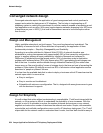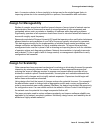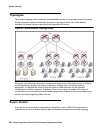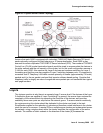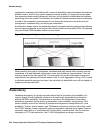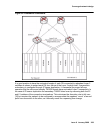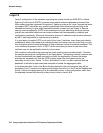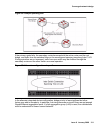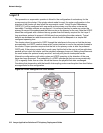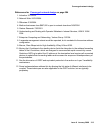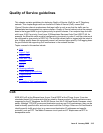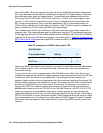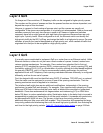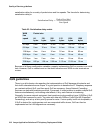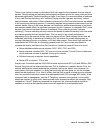
Network design
312 Avaya Application Solutions IP Telephony Deployment Guide
Layer 3
The symmetric or asymmetric question is linked to the configuration of redundancy for the
routers serving this cluster. If the single subnet model is used, the router configuration in the
direction of the cluster will also follow the asymmetric model. Virtual Router Redundancy
(VRRP) [11] will be configured with one router as the primary, and the other router as the
secondary. If multiple subnets are configured, it is common practice to make one router the
primary for some of the subnets and the other router as the primary for the rest. Note that VRRP
should be configured with a failover latency greater than the latency required for the Layer 2
loop avoidance protocol to prevent LAN failures from perturbing the wider network. Typical
defaults are between two and three seconds, which should be adequate in a simple well
configured spanning tree.
The cluster subnet is exported to OSPF through the interfaces to the core so that the devices
are reachable, but OSPF needs to know which router interface to use for the packets directed to
the cluster. Proper operation requires that the link to the primary router is also the preferred
OSPF path. If the primary router fails in such a way that the link to the core is not brought down,
packets will not reach the cluster until the neighbor adjacency times out. Making these timeouts
too small makes the protocol overly sensitive, and may still provide inadequate results.
Alternative configurations with static routes and VRRP operating in the direction of the core
have also been proposed. The probability of a VRRP interchange that occurs asymmetrically
[12] is arguably lower than a router failure that leaves the physical link state unchanged.
Combining that observation with the benefit of decoupling route core disruption from local failure
are arguments for this configuration.
Figure 88: VRRP configured for Core Access



